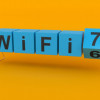Can 5G replace everybody’s home broadband?

When it comes to the possibility of home broadband competition, we want to believe. And in the case of 5G mobile broadband, wireless carriers want us to believe, too. But whether or not technological and commercial realities will reward that faith remains unclear. As with 5G smartphones, the basic challenge here sits at the intersection of the electromagnetic spectrum and telecom infrastructure economics.
When delivered over millimeter-wave frequencies and their copious amounts of free spectrum, 5G can match the speed and latency of fiber-optic broadband, with downloads of 1 gigabit per second and ping times under 10 milliseconds. But on those frequencies of 24GHz and up, signals struggle to reach more than a thousand feet outdoors. Carriers can fix that by building many more cell sites, each with its own fiber backhaul, but a fiber-to-the-block build-out may not be appreciably cheaper than fiber-to-the-home deployments. And while residences don't move and don't mind wireless antennas larger than a shirt pocket—unlike individual wireless subscribers—residences also have walls that often block mmWave signals. (Presumably also unlike individual wireless subscribers.)









































































